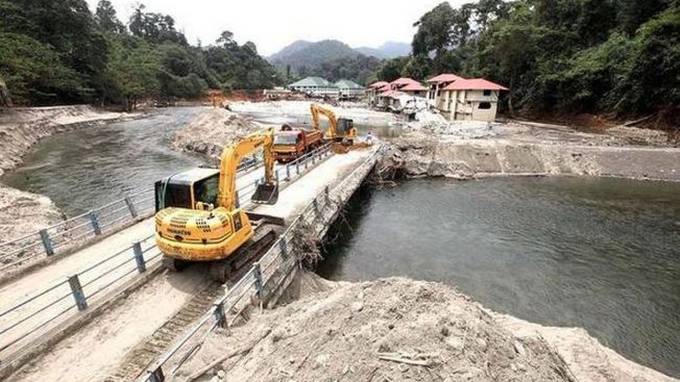

It is better not to say anything about people who are adamant that they will not do anything at the right time. But it is impossible to keep quite on certain things happening in this State.
Four months are over since the occurrence of deluge that devoured the whole state of Kerala. Since the relief and reconstruction activities are not at the required pace, many of the affected people are in dire straits.
There are people who lost their houses and livelihood to the floods. They will be relieved only if they get the help at the earliest. Bureaucratic red-tapesim is affecting the distribution of aids.
It was two days ago that the chief minister gave instructions in a meeting of collectors to complete the building of homes for the flood-affected homeless people by March 31.
The truth is that collectors, who are burdened with hundreds of other things have no time for anything.
There were mounds of sand up to five metre height along Pamba. It was only after public uproar that sand was removed before the pilgrim season.
This sand was shifted to the parking ground in Pampa as the parking ground was not in usable condition post-flood. This sand is seen as a pricey gift of nature to the government but even after four months no action has been taken to sell it off in auction.
96000 cubic metre sand had piled up at Pamba. If there is a good shower again, this sand will again reach Pamba. In the CESS study report, it is recommended to remove this sand without letting it to flow back to Pamba.
Similarly, there are also layers of sand in Pamba river bed and Triveni, which can raise the level of water in these rivers very soon. But the authorities concerned are of the opinion that they would only remove the sand after the pilgrim season.
Why de-silting was not done before the pilgrim season even though the government had three months’ time? To this question the answer is that the question is irrelevant since it is government affairs.
This is a matter which needs the permission at different levels and step by step procedures. For the removal of piles of sand, Revenue, forest and environmental departments have to show their mercy. It will be another rainy season by the time the approval of these departments are obtained.
In that case, if there is no another flood it will be only by sheer luck of the people. It is easy for people to forget a calamity after it is over. But the laxity shown by the government that should have taken a sudden decision to meet any exigency will lead to great losses to the whole state.
For any project done under the aegis of the government, completing on time has been a big challenge. The sad part of taking three years to complete a project that should have been completed in six months is not only the additional expense it incurs but also the long time the people have to wait for getting the benefits of the project.
The government affairs is as usual; it takes its own time. A classic example for this is the tug boat accident in Vizhinjam. The abandoned tugboat at Seaward Wharf of Vizhinjam Port - MV Brahmekshara – sank, spilling oil and fuel posing threat to marine life and environment.
The port authorities were on the toes due to lack of pollution-fighting equipment and disaster management measures to contain the spill. It is essential to remove the oil as it could otherwise create environmental problems. But the port authorities have called tenders and are waiting. It is not known whether any one has responded to the tender. Even in dangerous situations, the government seems to go by its rules and official complications.
Who knows how long the oil spillage will remain on Vizhinjam sea as in the case of Pamba sand.